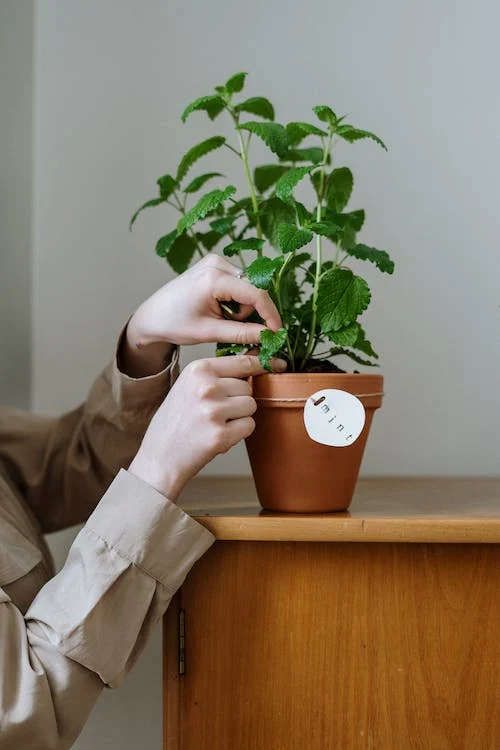When it comes to creating a harmonious and enjoyable garden space, the presence of unwelcome guests like wasps can quickly put a damper on your outdoor experience.
These pesky insects not only disrupt your tranquility but can also pose a threat to those with allergies.
The solution, however, might lie in a simple yet powerful secret that nature holds – a herb that not only beautifies your garden but also acts as a natural wasp repellent.
Get ready to discover the must-plant herb that will transform your garden into a wasp-free sanctuary.
The Marvelous Mint: Nature’s Dual-Purpose Gift

Enter the world of mint, a versatile herb that has enchanted gardeners for centuries with its refreshing aroma and diverse uses.
While mint is celebrated for its culinary and medicinal value, it also possesses a hidden quality that is a true game-changer for your garden – its ability to repel wasps effectively.
Aromatic Armor:
Mint’s distinctive scent is irresistible to us, but wasps find it overwhelming and unpleasant. Planting mint around your garden acts as a natural barrier, creating a zone that wasps would rather avoid.
Its powerful aroma masks the scents that attract wasps, making it an elegant and effortless deterrent.
Visual Delight:
Imagine your garden adorned with lush, vibrant greenery that also doubles as a natural wasp repellent.
Mint’s attractive foliage adds a touch of elegance to your outdoor space, while simultaneously sending a signal to wasps that they’re not welcome.
Versatility Unleashed:
From peppermint to spearmint and everything in between, the mint family offers a wide range of choices to suit your taste and garden aesthetic.
Whether you prefer compact pots or sprawling garden beds, there’s a mint variety for every space.
Planting and Caring for Your Mint

Getting started with mint couldn’t be easier. Here’s a simple guide to ensure your mint plants thrive and serve their wasp-repelling purpose:
Selecting the Right Spot:
Mint thrives in partial to full sunlight. Choose a location in your garden that receives at least 4-6 hours of sunlight a day.
Well-Drained Soil:
Mint prefers well-draining soil to prevent waterlogging. If your garden soil tends to retain water, consider adding sand or compost to improve drainage.
Planting Technique:
Whether you’re using seeds or young mint plants, ensure they’re planted at the same depth they were in their original container. Space them around 18 inches apart to allow for healthy growth.
Watering:
Mint appreciates consistent moisture, but avoid over-watering. Water when the top inch of soil feels dry to the touch.
Pruning for Abundance:
Regularly trim your mint to encourage bushier growth and to prevent it from becoming invasive. Pruning also releases more of that delightful minty aroma into the air.
A Garden Transformed
As your mint plants establish themselves in your garden, you’ll notice not only a decrease in wasp activity but also an increase in your garden’s overall allure.
With its lush foliage and enchanting scent, mint contributes to a serene environment where you can fully savor the joys of outdoor living.
Imagine hosting garden parties, picnics, and lazy afternoons without the constant threat of wasps disrupting the festivities.
With mint as your natural guardian, your garden transforms into a haven of peace and beauty, where you and your loved ones can bask in the serenity of nature without worry.
Conclusion
In the realm of gardening, solutions to common problems often come from the very heart of nature itself.
Mint, with its aromatic prowess and visual splendor, is the ultimate herb that effortlessly repels wasps, turning your garden into a captivating sanctuary.
By embracing this natural secret, you not only take a step towards a pest-free environment but also immerse yourself in the soothing embrace of a mint-scented haven.
So, embark on this green journey, and let mint weave its magic in your garden, leaving wasps with no choice but to find a new place to buzz.

